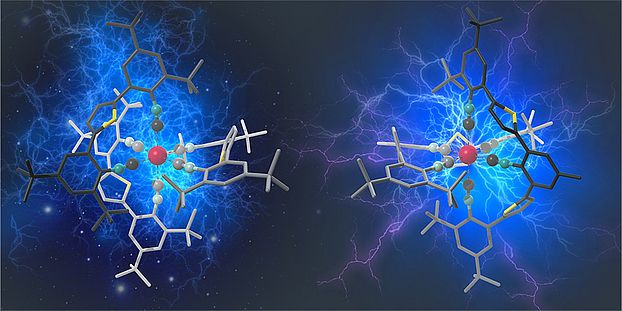In their quest to produce more-sustainable luminescent materials and catalysts for the conversion of sunlight into other forms of energy, University of Basel researchers have developed a class of compounds based on manganese. The metal is more abundant — and cheaper — than iridium, as well as less toxic.
Iridium is commonly used in OLEDs. Ruthenium, used in solar cells, is another stable element that is very rare. The advancement could lead to using manganese in solar cells. Manganese is, in fact, 900,000 times more abundant in Earth’s crust than iridium, which is rarer than gold or platinum.
The team led by Oliver Wenger and Patrick Herr specifically produced luminescent manganese complexes in which exposure to light causes the same reactions to take place as in ruthenium or iridium compounds.
Currently, in terms of their luminous efficiency, iridium compounds perform better than the manganese complexes. However, the light-driven reactions that are needed for artificial photosynthesis take place at high speed. This is due to the structure of the manganese complexes, which leads to an immediate charge transfer from the manganese toward its direct bonding partner upon excitation with light.

For the first time, manganese complexes show the types of luminescent properties and photocatalytic behavior that were primarily associated with noble metal compounds. Courtesy of the University of Basel Department of Chemistry via Jakob Bilger.
The same design principle for complexes is already used in types of solar cells. Until now, though, it has mostly featured noble metal compounds, the Basel team said.
Use of manganese has another advantage: It prevents the vibration of complexes. The absorption of light energy normally causes greater distortion in complexes made of cheap metals than it does in noble metal compounds. As a result, the complexes start to vibrate, and a large part of the absorbed light energy is lost.
The researchers incorporated tailor-made molecular components into the complexes to force the manganese into a rigid environment. This suppressed unwanted vibrations and distortions, and the design principle also increased the stability of the resulting compounds and their resistance to the decomposition process.
“Until now, no one has succeeded in creating molecular complexes with manganese that can glow in solution at room temperature and that have these special reaction properties,” Wenger said. The advancement opens possibilities in the field of noble metals, he said.
The team wants to improve the luminescent properties of the new manganese complexes and anchor them on suitable semiconductor materials for use in solar cells. Other possible refinements of the material include water-soluble variants that could be used in place of ruthenium or iridium compounds in the photodynamic therapy used to treat cancer.
The research was published in Nature Chemistry (www.doi.org/10.1038/s41557-021-00744-9).